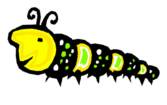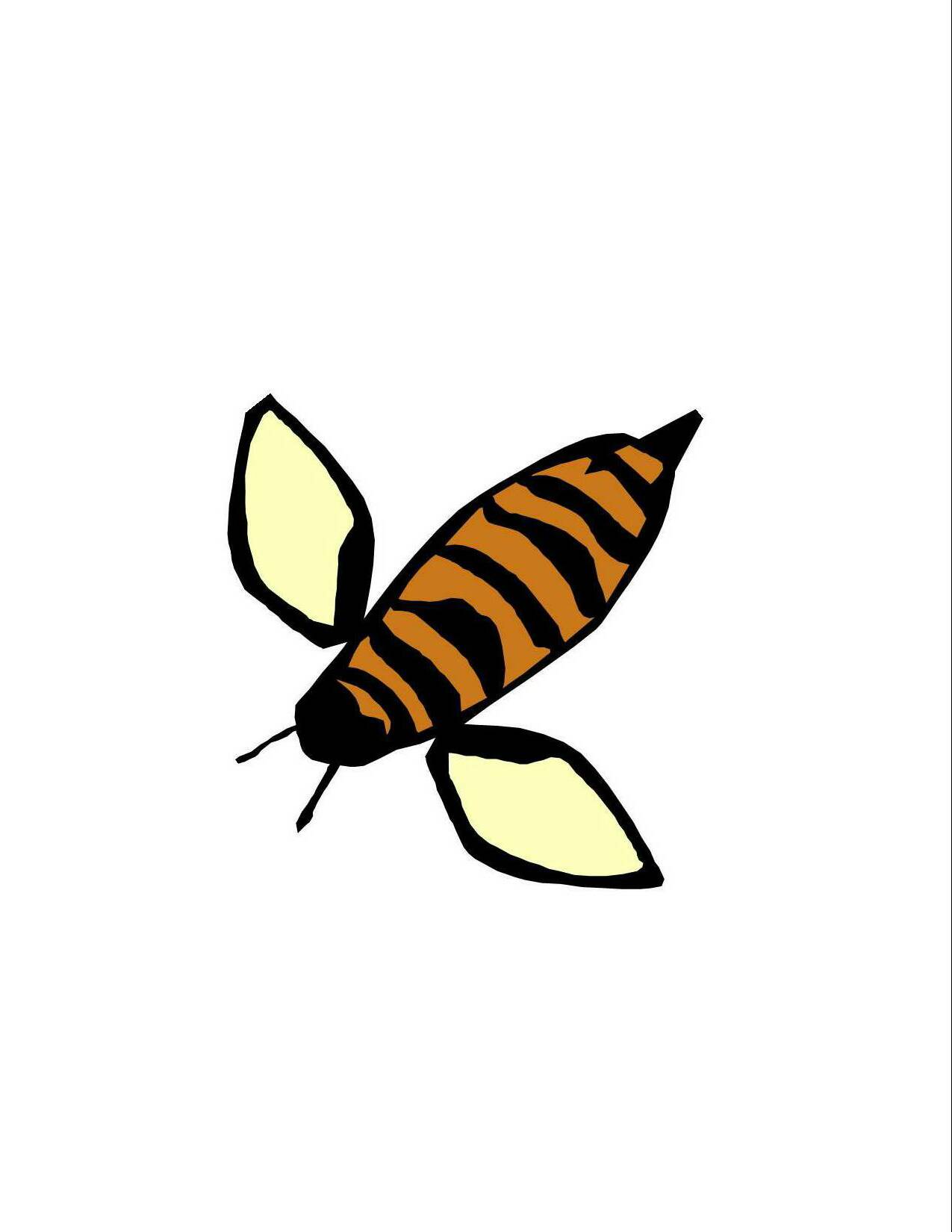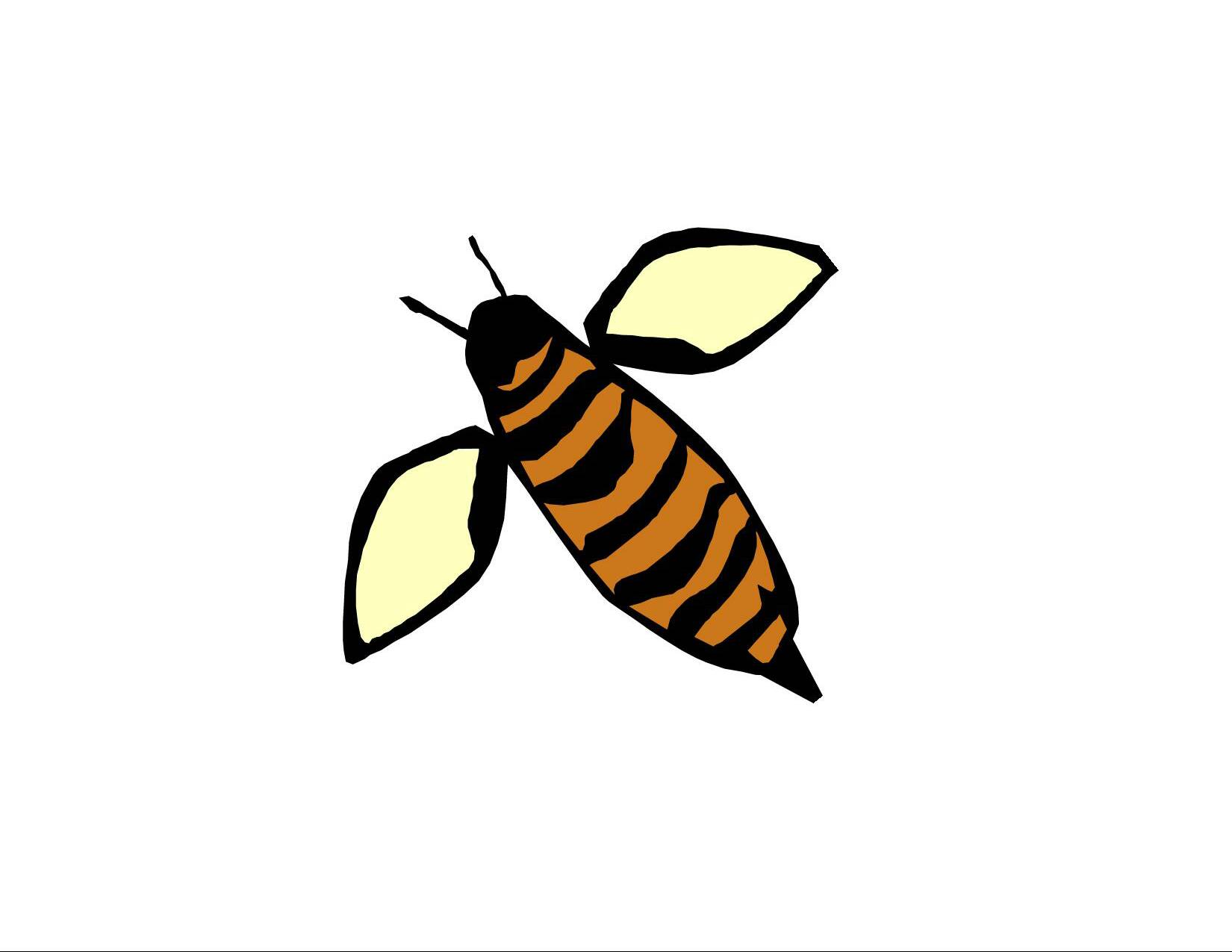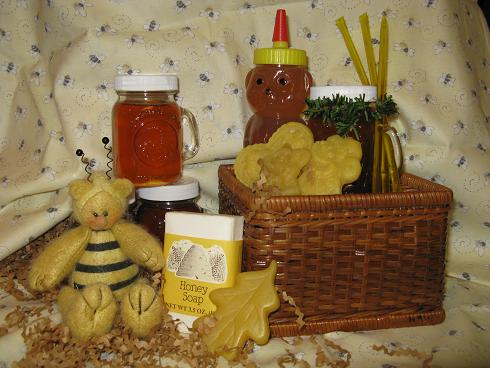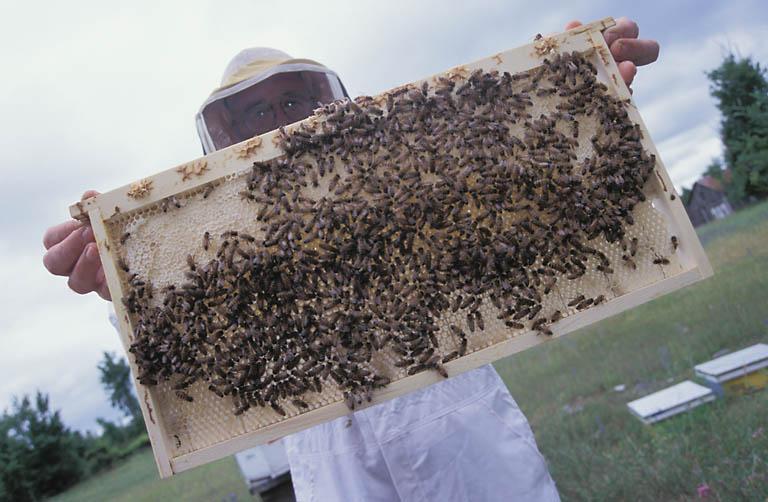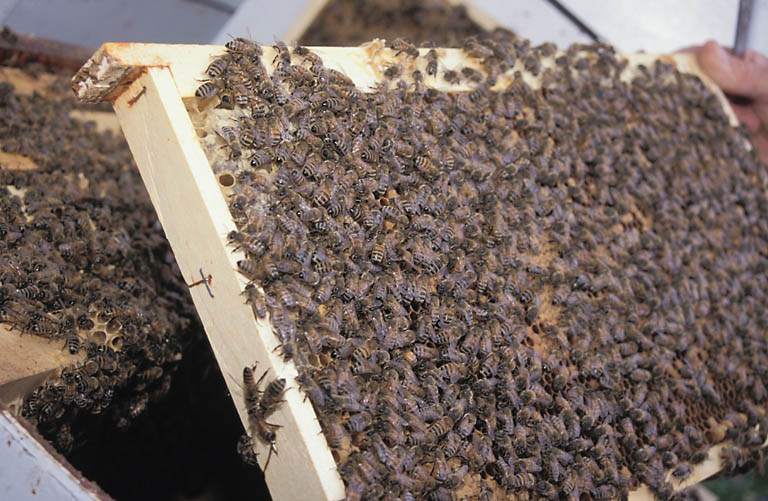DID YOU KNOW? It takes 36 bees 6 weeks to make one tablespoon of honey!
C
 | ||||
Honeybees are social insects of the order Hymenoptera; they form large colonies consisting of a single queen, who is constantly laying eggs to keep the colony populated, a few hundred drones (males) whose job it is to fertilize other queens, and tens of thousands of workers, all of whom are female. Honeybees have been kept by people for thousands of years, mainly for honey and beeswax, although lately pollen and propylis (the substance used by the bees to "glue" parts of the hive together) are also in demand. A beneficial by-product of the honeybee is the fact that as it goes from flower to flower gathering nectar and pollen for use back in the hive, it spreads pollen from one blossom to the next, thus pollinating the plants---today it's estimated that worldwide honeybees and other insects are responsible for pollinating approximately 30 percent of humanity's major food crops. Put another way, for every third bite of food you eat you can thank a honeybee or other insect pollinator.
THE BUZZ ON HONEYBEES
Support your local beekeeper!
Buy local honey!
NO WILD HONEYBEES!
Honeybees are NOT native to the United States. Colonists brought them from Europe when they immigrated. It was common for families to have honeybee hives in order to harvest honey for personal use.
It was not until the mid 1900s that mass farming of crops started the demand for pollination hives of honeybees. The native pollinators no longer handled the pollination of macro commercial farms and large numbers of honeybees were trucked in temporarily to pollinate spring crops. As each crop finished its blooming season, the hives were then trucked on to the next crop.
There are no WILD honeybees in the United States! Honeybees that have taken up residence in old trees, barns or hollows of any type are NOT WILD. Because they were introduced to the United States so many years ago, these bees are simply escapees or a swarm from a managed hive. The wayward bees may survive a short time without the management of a beekeeper, but due to disease, mites and other threats a beekeeper can manage for, their rate of survival is very low.
 | ||||
- Honey
- Beeswax
- Bee Pollen
- Propylis
- Royal Jelly
BOUNTIES OF THE HIVE
 | ||||
 | ||||
Have you planted YOUR milkweed, yet? }i{
By eating local honey you are ingesting small amounts of pollen from the offending plants. This in turn may help the body build antibodies which reduce the allergic reaction!
HONEY MAY HELP
PLANT ALLERGIES!
Some Honeybee Fun Facts You Might Like to Know!
- The honeybee's wings stroke 11,400 times per minute
- A honey bee can fly for up to six miles at up to 15 miles per hour
- The average honeybee will make only one twelfth of a teaspoon of honey in its lifetime
- A colony of bees consists of 20,000-60,000 honeybees and only one queen
- Worker honeybees are all female
- The average queen bee lives for about 2-3 years and is the only bee that lays eggs
- The queen lays up to 2500 eggs per day at the peak of the season
- The male honeybees are called drones, they do no work and have no stinger
- Each honeybee colony has a unique odor that its inhabitants identify
- Only worker bees sting and only if they feel threatened (a queen is capable of stinging but is seldom in the position to)
- A worker bee will die after it uses its stinger
- Honey bees communicate with other members of the hive by "dancing"
MONARCHS & MILKWEED
HUMMINGBIRDS
JUST FOR FUN
SPONSORSHIP PROGRAMS
POLLINATION STATION
POLLINATION
IN THE MEADOW
